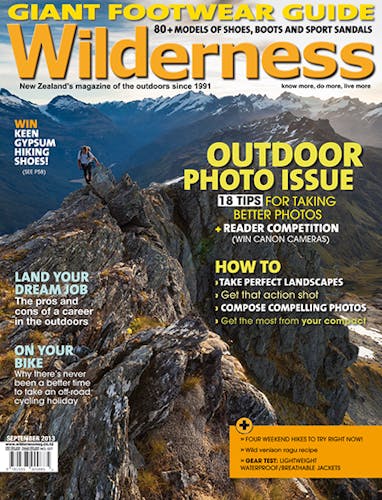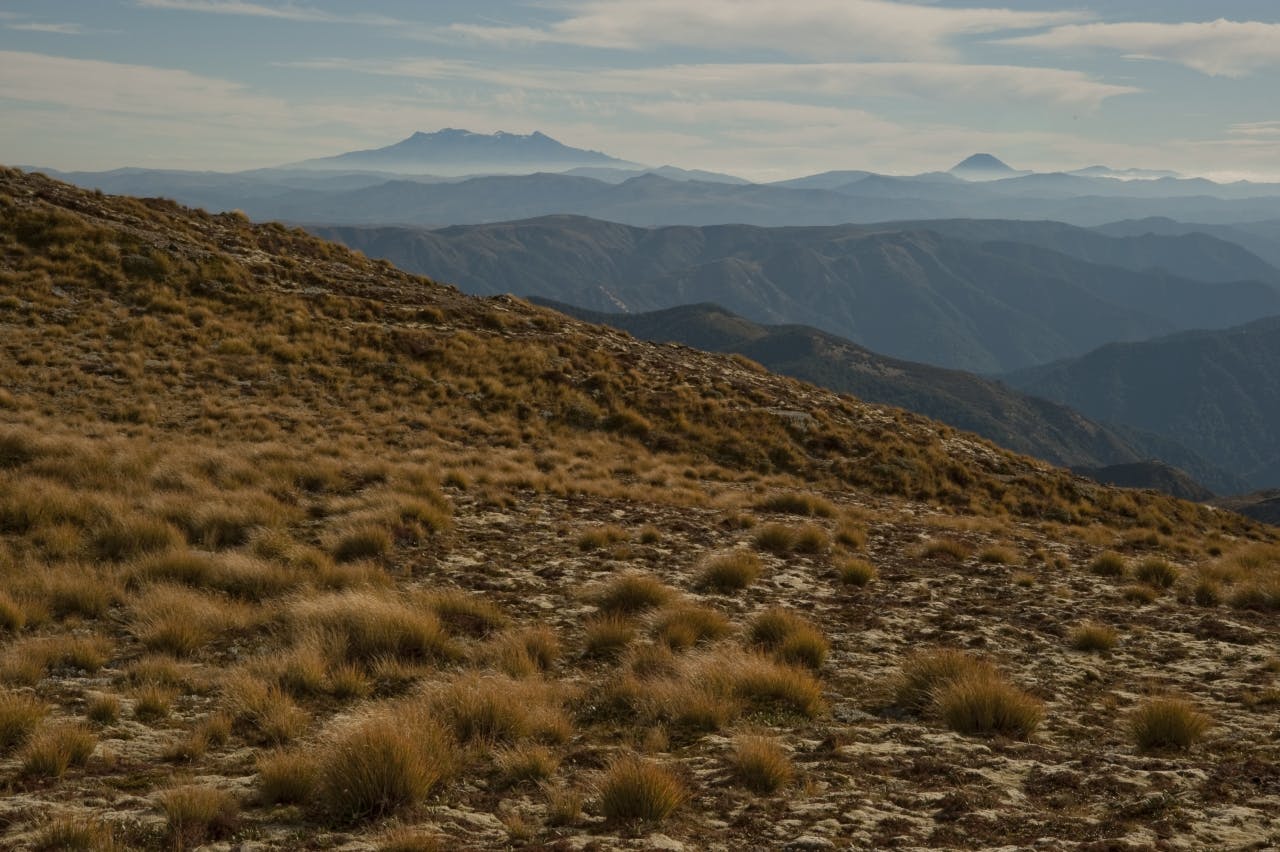Kaweka Forest Park
The Kaweka Range offers some of the North Island’s best tramping, rafting, fishing and hunting. Established in 1974, most of the range is protected as the 59,000ha Kaweka Forest Park. With some 30 huts, a large track network, hot springs and some good roadside camping, the park caters for everyone from the hardened tramper to family groups. Both the park’s two largest rivers, the Mohaka and Ngaruroro, offer excellent trout fishing and rafting, while hunters find challenge stalking both red deer and the wily sika.
– Shaun Barnett
1. Mangatainoka Hot Springs
Where else can you begin a tramp with an enjoyable immersion in a natural hot pool (at the Mangatutu Hot Springs near the car park), walk to a large hut (Te Puia Lodge, 20 bunks) and have another hot soak at the end of the day (at the Mangatainoka Hot Springs)? The Mangatainoka Hot Springs have good camping areas nearby too.
2. Kaweka Flats
From Makahu Saddle car park, a 2-3hr tramp leads to Kaweka Flats, an open area occupied by Kaweka Flats Biv (two bunks). Once a place where musterers’ horses grazed, the flats now offer a good day-trip or overnight destination, with fine views over the main Kaweka Range.
3. Kaweka J
Accessible from the Makahu Saddle car park, a steep climb leads up to the range’s highest peak at Kaweka J. Marked by a large cairn built by members of the Heretaunga Tramping Club to commemorate members lost in the Second World War, the undulating tops offer extensive views towards the volcanoes of the Central Plateau. Dominie Biv (two bunks) provides shelter en route. Take crampons and ice axe during winter.
4. Back Ridge Hut
Built in 1957, the four-bunk Back Ridge Hut was one of the first two huts built by the New Zealand Forest Service in the Kaweka Range after they took over deer culling operations the year before. Set beside a babbling stream amongst copses of stunted beech forest and beneath the lofty heights of the main Kaweka Range, it’s one of the park’s most appealing huts.
5. The Lakes
Accessible from near Kuripapango, these two lakes are thought to have formed thousands of years ago when a massive landslide from nearby Mt Kuripapango blocked the path of two small streams. From the Lakes Road car park, an easy track leads to the shores of the larger, western lake.
6. Kuripapango (Ox Bow) Campsite
This pleasant DOC campsite beside the Ngaruroro River, near Kuripapango, makes a perfect summer getaway for families, or a great place to stop and swim while travelling over the road between Napier and Taihape.
7. The Venison Top
For hunters, the name Venison Top says it all. Tira Lodge occupies a position on the edge of the Venison Top, and in winter sometimes live up to its alternative name: Kelvinator Lodge, or ‘The Fridge on the Ridge’.
8. Old Manson Hut
Although built in the mid-1950s, this historic hut features old-style building techniques such as totara slab cladding, a malthoid roof and a dirt floor. Spend a night here, or if you prefer more comfort, at the nearby NZFS-style Manson Hut. Once part of Ngamatea Station and grazed by sheep, the Manson Tops are now the domain of trampers, hunters and deer.
9. Tussock Hut
One of the most delightful settings in Kaweka Forest Park, this classic NZFS six-bunk hut occupies a tussock-floored valley with beech forests covering the surrounding hills in a curious reversal of the normal vegetation pattern. This likely resulted from the ‘frost-inversion’ effect, where persistent winter frosts result from cold air pooling on the valley floor preventing the beech forest from establishing. Reaching Tussock Hut requires a solid 2-3 days tramping from either Clements Mill Road or Makahu Saddle.
10. Mackintosh Hut
Mackintosh Hut (six bunks) occupies a small natural clearing in the surrounding mountain beech forest, and is usually reached on a 2-3hr track from Lakes Road. A steepish descent from the car park leads to a bridge over the Tutaekuri River, then an equally steep ascent to where the track levels off for the final hour to the hut.








